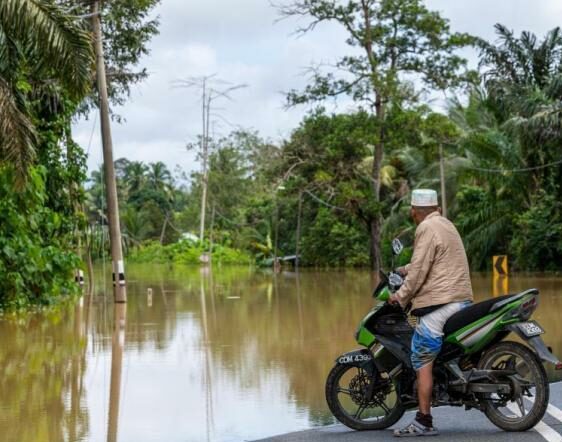Kuala Lumpur, January 5 In recent days, heavy rains have occurred in many places in Malaysia, causing a total of more than 20,000 people in many states.
Malaysia’s Supreme Head of State Abdullah went to the disaster area on the 5th to investigate the disaster.
Every year from November to March of the following year, the northeast monsoon brings frequent strong storms to Malaysia.
Since January 1 this year, long-term heavy rains have hit Malaysia’s states such as Pahang, Johor, Kelantan and Selangor.
Pahang State, located on the east coast of the Malay Peninsula, has been particularly affected by the disaster in the past day. Heavy rainfall caused Wenda, Pahang, to suffer the worst flood in 50 years.
At one time, water and electricity were cut off and communication was cut off. In addition, the capitals of the state, Kwantan and Malan, were also hit by severe floods, and traffic in many parts of the state were interrupted by floods.
According to data provided by Malaysia’s disaster management agency, as of noon on the 5th, more than 13,000 people had been evacuated by the flood in Pahang.
The state has set up 187 temporary evacuation centers to accommodate disaster victims.
Johor was also seriously affected by the continuous long rainfall, and more than 7,000 people were evacuated from the disaster.
As the disaster slowed down, by noon on the 5th, the evacuation population had dropped to more than 5,000.
Malaysia’s meteorological department predicted on the 5th that the weather in Pahang and Johor would improve, but maintained climate warnings for Kelantan, Terengganu and other states.
People from the meteorological department also pointed out that although Pahang has heavy rainfall this year, the flood damage in the whole horse will not exceed the perennial level.
Due to the recent COVID-19 epidemic in Malaysia, it is still growing rapidly.
Abdullah issued a statement through the National Palace after the disaster survey on the 5th, calling on rescue workers and the affected people in the disaster area to take the standard operating procedures for epidemic prevention as the primary consideration to prevent the spread of the epidemic.



